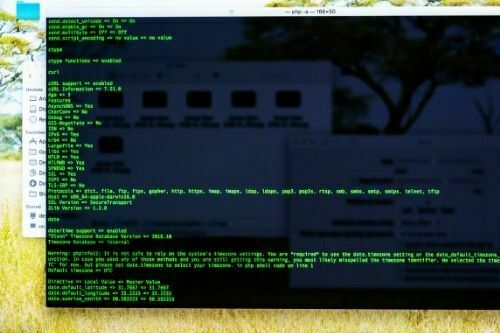Table of Contents
- Q. What is SSH’s function?
- Q. What is configuration management?
- Q. What is the significance of DevOps configuration management?
- Q. In short, what does CAMS stand for in DevOps?
- Q. What is Continuous Integration (CI)?
- Q. Why is Continuous Integration required?
- Q. What is Continuous Testing (CT)?
- Q. Explain the different phases in DevOps methodology.
- Key Takeaways
- FAQs
DevOps is a software engineering method that focuses on bringing together development and operations teams to automate a project. This strategy makes it simple to automate project service management and gain a better grasp of the production environment’s technical stack. This strategy is based on the Agile methodology, with a focus on team communication, resource management, and cooperation. The primary advantages of employing a DevOps structure are the speed of development and resolution of problems at the production environment level, the stability of applications, and the creativity involved. This blog comprises the common DevOps interview questions and answers that you must know to ace your interview in 2022.
Q. What is SSH’s function?

Answer: Secure Shell (SSH) is an administration protocol that allows users to access and operate distant servers through the command line via the Internet.
SSH is a secure encrypted variant of the unencrypted and insecure Telnet protocol. This guarantees an encrypted connection with the remote server.
SSH additionally includes features for remote user authentication, input communication between the client and the host, and output delivery back to the client.
Q. What is configuration management?
Answer: The systematic processing of modifications in such a way that the system’s integrity is maintained throughout time is known as configuration management (CM). This includes a collection of rules, strategies, procedures, and tools for analyzing, managing, and monitoring change proposals, as well as maintaining the required documentation.
Q. What is the significance of DevOps configuration management?
Answer: Configuration management (CM) assists the team in automating time-consuming and tiresome processes, which improves the organization’s performance and agility.
It also aids in the consistency and improvement of the product development process by utilizing design simplification, detailed documentation, control, and change implementation throughout the project (phases/releases).
Q. In short, what does CAMS stand for in DevOps?
Answer: CAMS stands for Culture, Automation, Measurement, and Sharing. It reflects DevOps’ essential actions.
Q. What is Continuous Integration (CI)?
Answer: Continuous Integration (CI) is a software development method requiring developers to integrate their code into a common repository when they finish working on a feature. Each integration is validated using an automated build process, which helps teams to spot flaws in their code at an early stage rather than after release.
Q. Why is Continuous Integration required?
Answer: Continuous Integration for both development and testing has improve software quality while substantially lowering the timeframe to integrate new features. Because each contribution to the shared repository is promptly created and checked against the unit and integration test cases, the development team can find and correct problems early.
Q. What is Continuous Testing (CT)?
Answer: Continuous testing (CT) is a software development technique that involves testing applications continually throughout the software development life cycle (SDLC). CT’s purpose is to assess software quality across the SDLC, delivering vital feedback early and allowing for higher-quality, quicker delivery. CT allows teams to test each build in real-time (as soon as the code is pushed), allowing developers to gain immediate feedback on their work and avoid problems later in the SDLC.
Q. Explain the different phases in DevOps methodology.

Answer: The following are the six phases of DevOps.
Planning
This is the preliminary phase of the DevOps lifecycle, and it entails gaining a complete understanding of the project to provide the best product possible. This phase, when completed correctly, provides numerous inputs for the development and operations stages. This phase also aids the organization’s understanding of the project creation and management process.
For this, Google Apps, Asana, Microsoft Teams, and other tools are available.
Development
The planning phase is followed by the development phase, in which the project is constructed by creating system infrastructure, creating features by writing code, and then designing test cases and the automation process. Developers save their code in a code manager called a remote repository, which facilitates team collaboration by providing code viewing, editing, and versioning.
Tools such as git, IDEs such as eclipse and IntelliJ, and technology stacks such as Node, Java, and others are available to employ.
Continuous Integration (CI)
This phase enables code validation, build, and testing for automation. This guarantees that the modifications are done correctly and without development environment issues, and it also provides for the early detection of faults.
Jenkins, CircleCI, and other tools are apt for use.
Deployment
DevOps assists in the deployment automation process by utilizing tools and scripts with the ultimate objective of automating the process through feature activation. In this case, cloud services may be employed as a driving factor in the transition from finite infrastructure management to cost-optimized management with the possibility of endless resources.
Microsoft Azure, Amazon Web Services, Heroku are some of the tools for this phase.
Operations
Due to dynamic infrastructure changes, this phase frequently occurs throughout the product/lifespan. It allows the team to improve the product’s availability, scalability, and effective transformation.
Need for tools such as Loggly, BlueJeans, AppDynamics, and others are frequent here.
Monitoring
Monitoring is an ongoing phase of the DevOps process. This phase is where you monitor and analyze data to determine the state of software applications.
Commonly used tools include Nagios, Splunk, and others.
Read more: Google Cloud’s Student Success Services
Key Takeaways
- It’s not enough to pass these DevOps code interview questions; enrolling in a DevOps certification program to master DevOps skills is also advisable.
- These courses will help you learn all the DevOps tools and principles of DevOps.
- From start to finish, these training sessions walk you through the most frequently asked DevOps interview questions and answers.
We hope this blog post was informative and helpful. If you have any doubts, you can reach us here.
You can also leave a comment below and share your thoughts.
Liked this blog? Read next: Software Engineering Subjects | Everything you need to know!
FAQs
Q1. Is DevOps a viable career option?
Answer – DevOps Engineer is in the top five of all tech salaries, according to Dice’s “2019 Tech Salary Report,” with an average compensation of $111,683. DevOps has evolved from a term to a viable approach for establishing and operating software-based and software-enabled organizations.
Q2. How many rounds of interviews are there in a DevOps interview?
Answer – There are a total of four rounds (Aptitude round, Technical round, then two technical interviews). Both the aptitude and technical rounds.
Q3. How much salary does a DevOps engineer make?
Answer – The typical DevOps engineer’s income is $96,637 per year, according to PayScale, with a low of $65K and a high of $140K.






